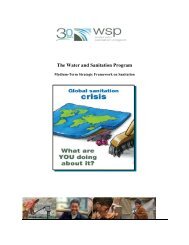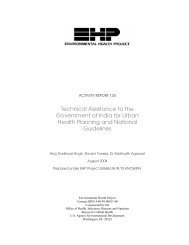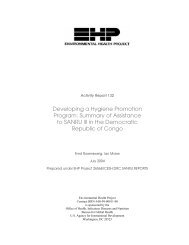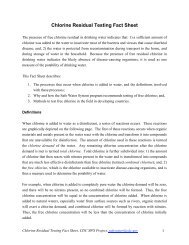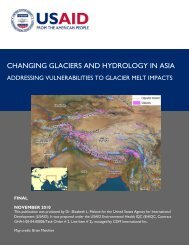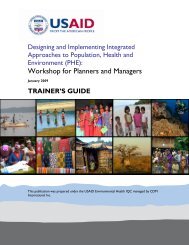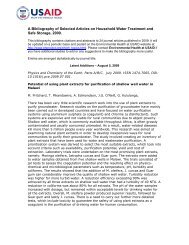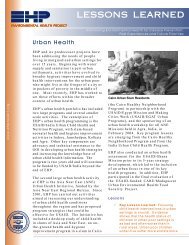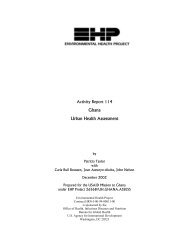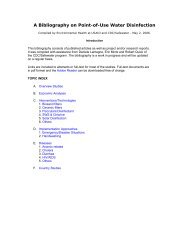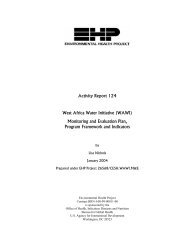Malaria Epidemic Forecasting and Preparedness Manual
Malaria Epidemic Forecasting and Preparedness Manual
Malaria Epidemic Forecasting and Preparedness Manual
You also want an ePaper? Increase the reach of your titles
YUMPU automatically turns print PDFs into web optimized ePapers that Google loves.
As you see in Fig. 2, in Massawa subzoba, there is not a regularseasonal peak of transmission. Instead, there is low leveltransmission most of the time, with occasional peaks. In thiscase it seems that there were epidemics in January 1998 <strong>and</strong>January 2001.To underst<strong>and</strong> the likelihood of epidemics in a particular area ata particular time, we need to have knowledge of the past historyof cases in that particular area so that we know how many casesare expected. Much of that information is known by theexperienced staff, but it is important to document it to make itclear <strong>and</strong> to pass on the knowledge to others.We also need to give a figure of the number of epidemics thatoccurred in particular areas over particular time periods (forexample, by year or quarter). This is because one of the targetsof the NMCP is to reduce the number of malaria epidemics <strong>and</strong>the number of cases during epidemics. This cannot be evaluatedunless we know how many epidemics were occurring in the past<strong>and</strong> present, <strong>and</strong> how many may occur in the future.Eritrea <strong>Epidemic</strong> <strong>Manual</strong>, June 2003 5



